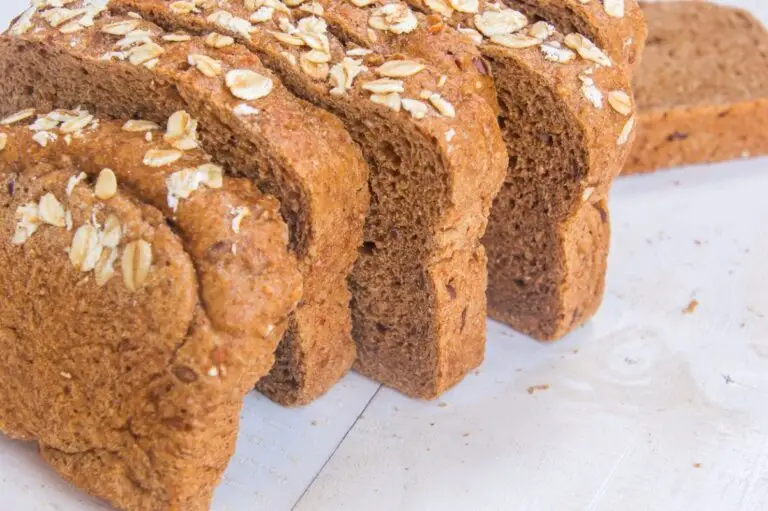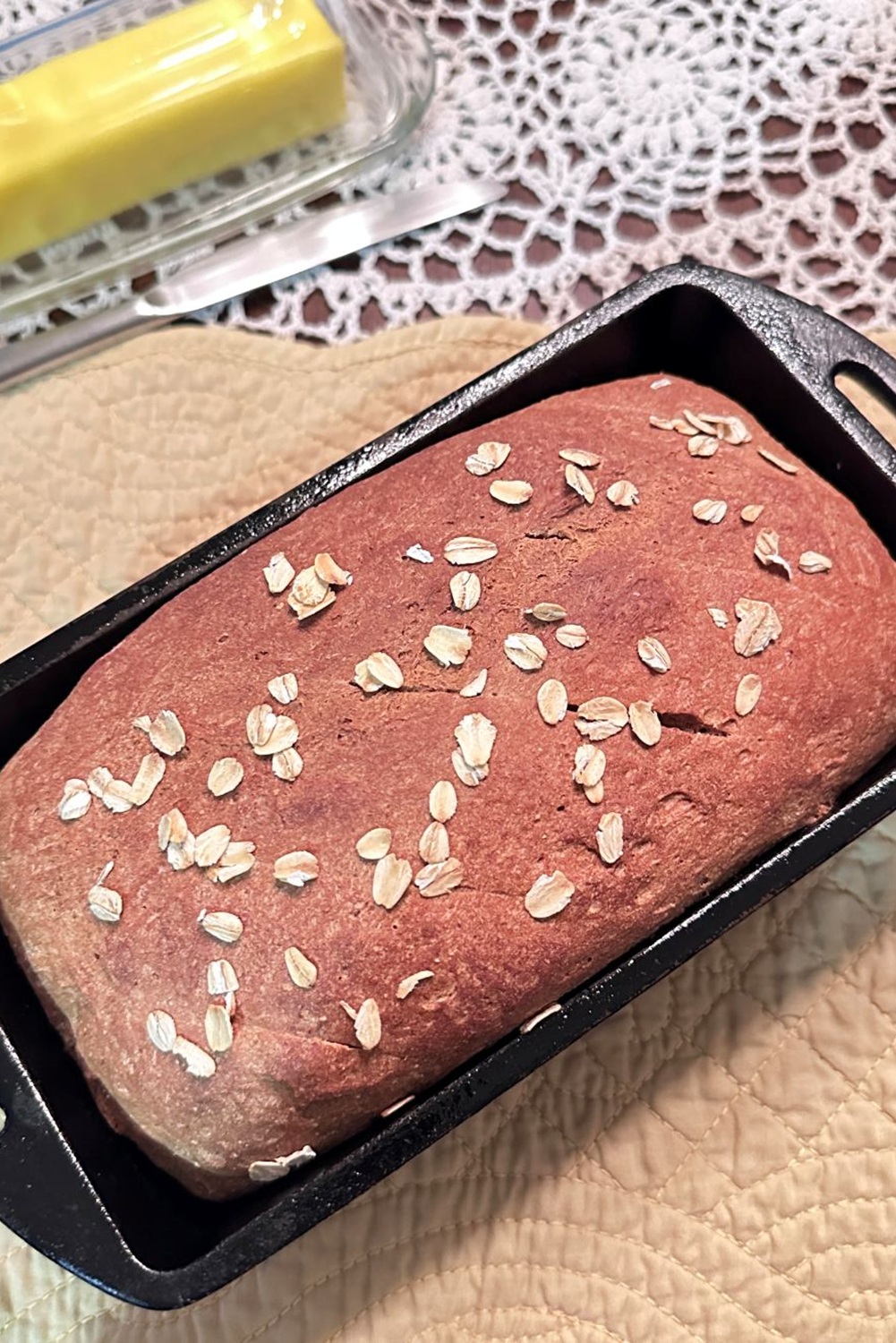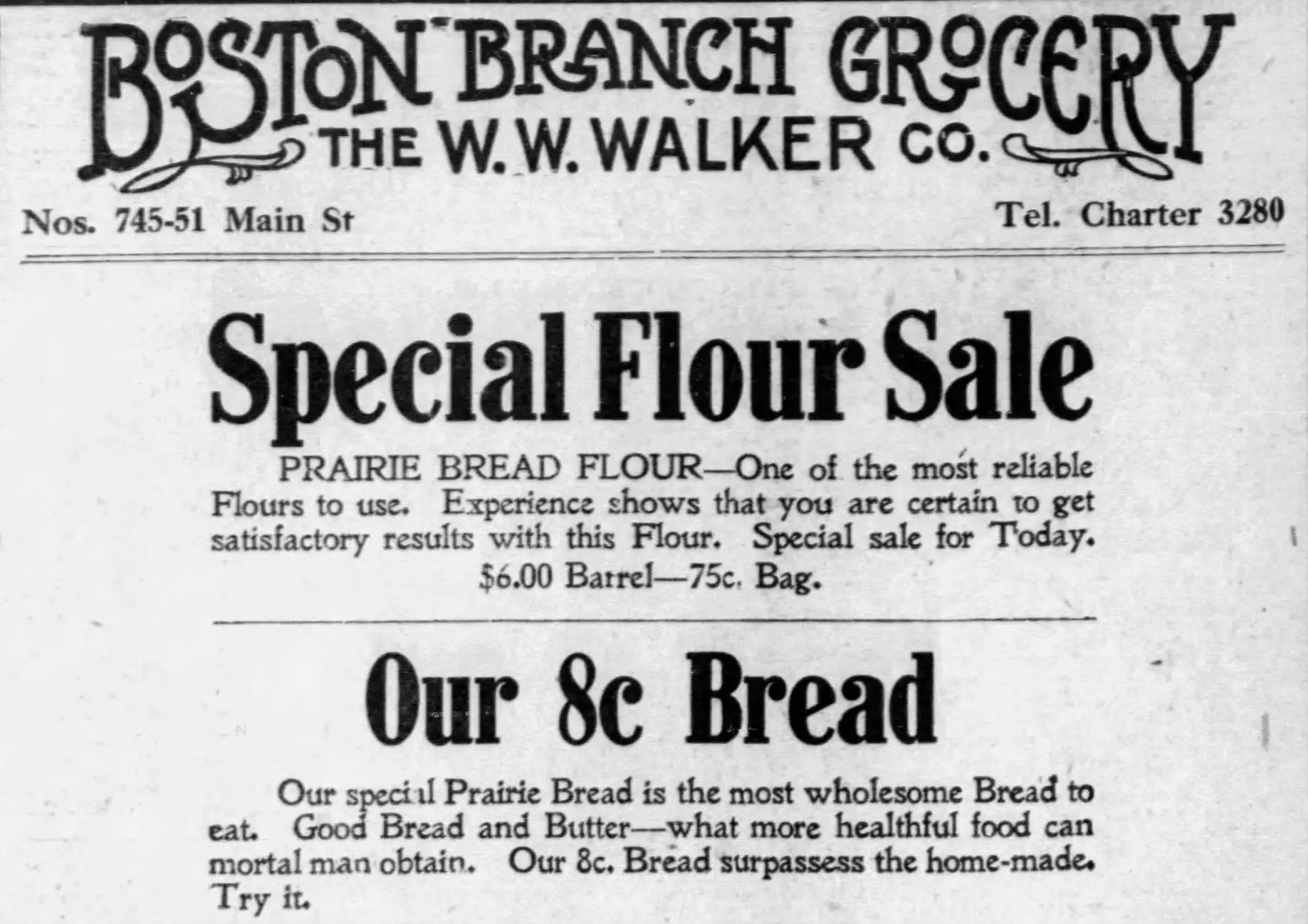This authentic German-American prairie bread brings together molasses, rye, and honey in a deeply flavorful loaf that carried pioneer families through harsh winters and endless prairie days. I've tested this 1800s-inspired recipe a few times to perfect the rise, and the result is a tender, slightly sweet bread with a golden-brown crust that stays fresh for days. It's my wife's favorite bread, hands down.
The Story Behind Prairie Bread
When German pioneers settled the American prairie in the 1800s, they arrived with cherished bread recipes from their homeland, but without all the necessary ingredients. Dense rye loaves and sourdough were staples back home, yet wheat and rye were scarce on the open plains.
These resourceful settlers turned to their Native American neighbors, who shared local ingredients and taught them which wild plants could be foraged for sustenance. The result was a uniquely American bread: dark, sweet, and hearty, made with a blend of wheat, rye, molasses, and honey.
Prairie bread's popularity didn't fade with the frontier. Throughout the early 1900s, commercial bakeries and grocers across the United States heavily advertised prairie bread flour and ready-made loaves, with establishments like Boston Branch Grocery making it a staple offering that brought this pioneer tradition into urban kitchens far from the prairie. By the 1920s, as factory-baked breads like Wonder Bread began dominating American tables, prairie bread maintained its devoted following among home bakers who appreciated its rustic character and distinctive flavor.
Hartford, Connecticut • Mon, Nov 18, 1912
What Makes This Prairie Bread Recipe Enduring

Authentic American Settlers Prairie Bread Recipe
This authentic German-American prairie bread is a deeply flavorful loaf made with molasses, rye flour, and raw honey – just as pioneer families baked it in the 1800s. Dark, slightly sweet, and incredibly tender, this bread stays fresh for days and fills your kitchen with the warm scent of frontier life.
- Total Time: 4 hours 30 minutes
- Yield: 1 Loaf 1x
Ingredients
- 1/2 cup warm water (105-115°F)
- 1 teaspoon sugar
- 2 teaspoons active dry yeast
- 2 1/4 cups all-purpose flour
- 1/4 cup whole wheat flour
- 1/4 cup rye flour (or cornmeal)
- 1 tablespoon dark cocoa powder (or espresso powder)
- 2 tablespoons dark molasses
- 1 teaspoon kosher salt
- 1/2 cup warm water (about 110°F)
- 2 tablespoons olive oil (or corn oil)
- 1/4 cup warm raw honey
- 1 egg, beaten (for brushing)
- Rolled oats for topping (optional)
Instructions
- Proof the Yeast: In a small bowl, combine ½ cup warm water (105-115°F), 1 teaspoon sugar, and 2 teaspoons active dry yeast. Stir gently to dissolve and let sit for 5-10 minutes until the mixture becomes foamy and bubbly. This confirms your yeast is alive and active.
- In a large mixing bowl, whisk together all-purpose flour, whole wheat flour, rye flour, cocoa powder, and salt until evenly mixed.
- Add the proofed yeast mixture, remaining ½ cup warm water, honey, olive oil, and molasses to the dry ingredients. Stir with a wooden spoon or stand mixer until a shaggy dough forms with no dry flour remaining.
- Turn dough onto a lightly floured surface and knead for 5 minutes until smooth and slightly sticky. If too stiff, dampen hands with water while kneading.
- Place dough in a lightly greased bowl, brush top with water, cover tightly with plastic wrap, and let rise in a warm place for 1 ½ – 2 hours until nearly doubled.
- For 2 smaller loaves: Divide risen dough into 2 equal pieces. Flatten each into a rectangle, roll up lengthwise tightly, and pinch seam closed to form a loaf shape.
- For 1 large loaf: Shape the entire dough into one large round or place in an oiled 9×5-inch bread pan.
- Place shaped loaf/loaves on a parchment-lined baking sheet. Brush tops with beaten egg, sprinkle with oats if desired, and press gently. Cover loosely and let rise 1 ½ – 2 hours until puffed and nearly doubled.
- Preheat oven to 350°F. Score with 3-4 diagonal slashes about ¼ inch deep.
- Bake for 30-32 minutes (for 2 smaller loaves) or 40-45 minutes (for 1 large loaf) until deep brown and the loaf sounds hollow when tapped. Cool on a wire rack for at least 20 minutes before slicing.
Notes
- Proofing the yeast ensures it’s alive and active before you commit to making the dough. This is especially important when using active dry yeast.
- Water temperature matters: too hot (over 120°F) kills the yeast, while too cold (under 100°F) prevents it from activating properly.
- Prep Time: 30 minutes
- Cook Time: 30-32 minutes
- Category: Bread
- Method: Baked
- Cuisine: German-American
How to Make Perfect Prairie Bread
Start with Quality Ingredients:
Raw honey is the secret to this bread's authentic flavor and slow rise. Look for local raw honey at farmers' markets or health food stores; it should be cloudy and opaque, not crystal clear like processed honey. The natural enzymes and trace minerals in raw honey interact with the yeast differently, creating a more nuanced flavor and a tender crumb.
Dark molasses (not blackstrap) provides the signature sweetness and deep color. Grandma's or Brer Rabbit brands work perfectly.
Rye flour adds authentic tang and texture. Bob's Red Mill medium rye flour is widely available and works great, but any rye flour will do. If you substitute cornmeal, use a fine or medium grind for the best texture.
Recipe Variations, Serving Ideas, and Storage
Recipe Variations
Freezing Baked Bread
This prairie bread freezes exceptionally well; in fact, it's one of the best breads for freezing. For best results, slice the completely cooled loaf before freezing so you can remove individual slices as needed.
To freeze: Wrap the entire loaf (or individual slices) tightly in plastic wrap, then place in a heavy-duty freezer bag, pressing out as much air as possible. Label with the date and freeze for up to 3 months.
To thaw: Remove the desired number of slices and let them thaw at room temperature for about 5 minutes, or toast them straight from frozen. For a whole loaf, leave it in the freezer bag and thaw overnight on the counter or for several hours at room temperature.
Refreshing Stale or Frozen Bread
If your bread has dried out slightly or you want to refresh a thawed loaf, preheat your oven to 350°F. Run the entire loaf under cold water for just a light spritz (don't soak it), then place it directly on the oven rack and bake for 5-7 minutes. The moisture will steam the bread from the inside while the heat crisps the crust, making it taste freshly baked.
Refrigerator Storage (Not Recommended)
While it's tempting to refrigerate bread to extend its life, don't refrigerate Prairie bread. The cold temperature actually accelerates staling through a process called retrogradation, causing the bread to dry out and become crumbly within 2-3 days. Room temperature or freezer storage is always a better option.
Frequently Asked Questions
Yes, but the bread will rise faster and the flavor won't be quite as complex. Reduce the rising times by about 30 minutes and watch the dough carefully to prevent over-proofing.
Different flours absorb liquid differently, depending on humidity and brand. Add flour 1 tablespoon at a time during kneading until the dough is soft but manageable. It should feel slightly tacky, not wet.
Absolutely. After the first rise, punch down the dough, cover tightly, and refrigerate for up to 24 hours. Let it come to room temperature (about 1 hour) before shaping and proceeding with the second rise.
The most common cause is not allowing enough rising time. Raw honey slows the fermentation process, so patience is essential. Other causes include old yeast (always check the expiration date), water that was too hot and killed the yeast, or adding too much flour.
Yes, add ingredients to your bread machine according to the manufacturer's instructions (usually liquids first, then dry ingredients, with yeast added last). Use the "sweet bread" or "basic" setting. The texture will be slightly different from hand-shaped loaves, but still tasty.
Yes, but mix two separate batches rather than doubling in one bowl. Yeast doughs become difficult to handle in very large quantities, and most home mixers struggle with double batches.
Scoring controls where the bread expands during baking. Without those intentional slashes, steam builds up under the crust and bursts through in random, uneven spots. Scoring also creates that artisan bakery look.

This bread is a connection to the resourceful, resilient people who built lives on the American prairie. Every time you slice into a warm loaf, you're continuing a tradition that stretches back nearly two centuries.
What's your favorite way to enjoy homemade bread? Do you have family recipes passed down through generations, or are you creating new traditions in your own kitchen? I'd love to hear your stories in the comments.
If you make this authentic American settlers' prairie bread, please leave a rating and review! Your feedback helps other bakers and lets me know which vintage recipes resonate most with you.


0 comments